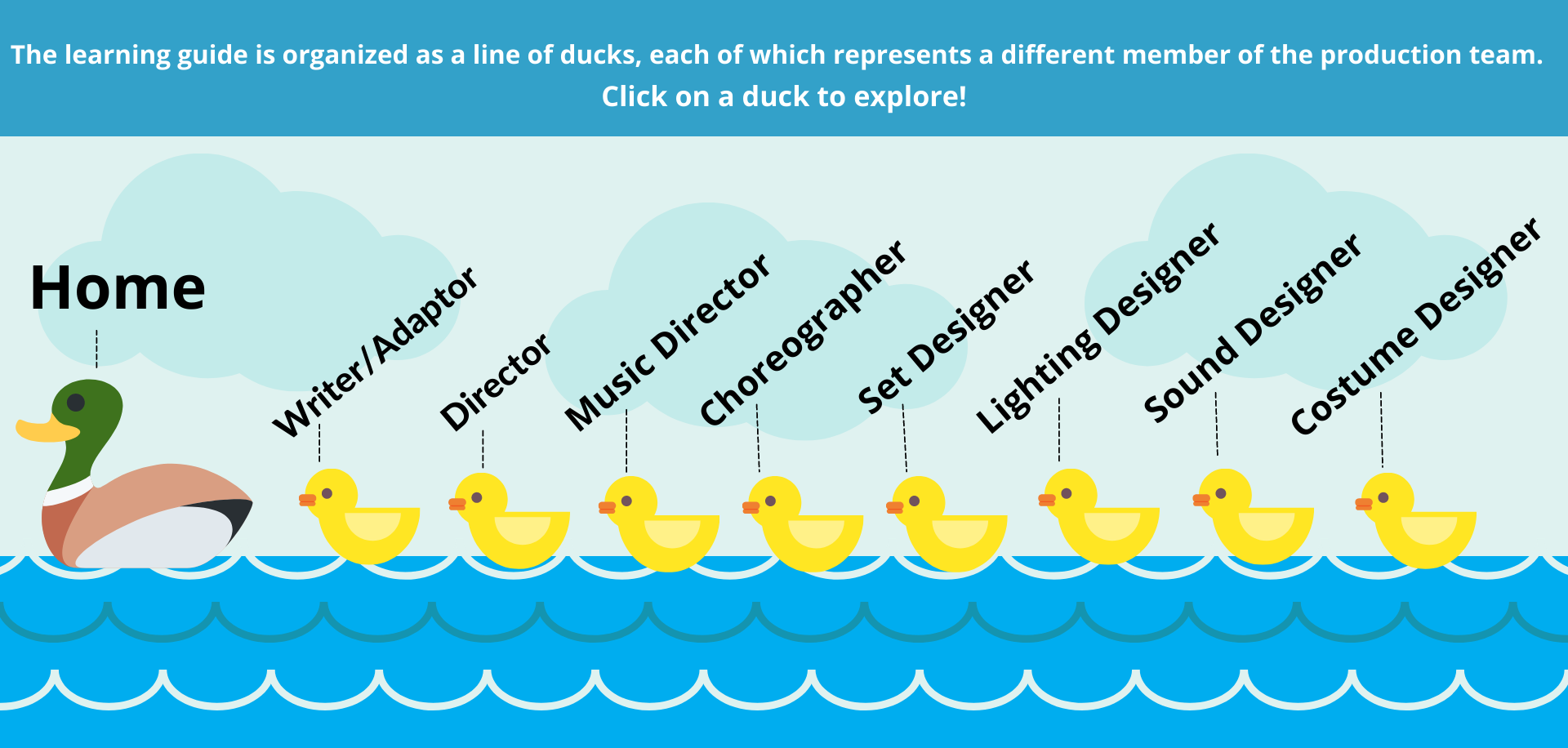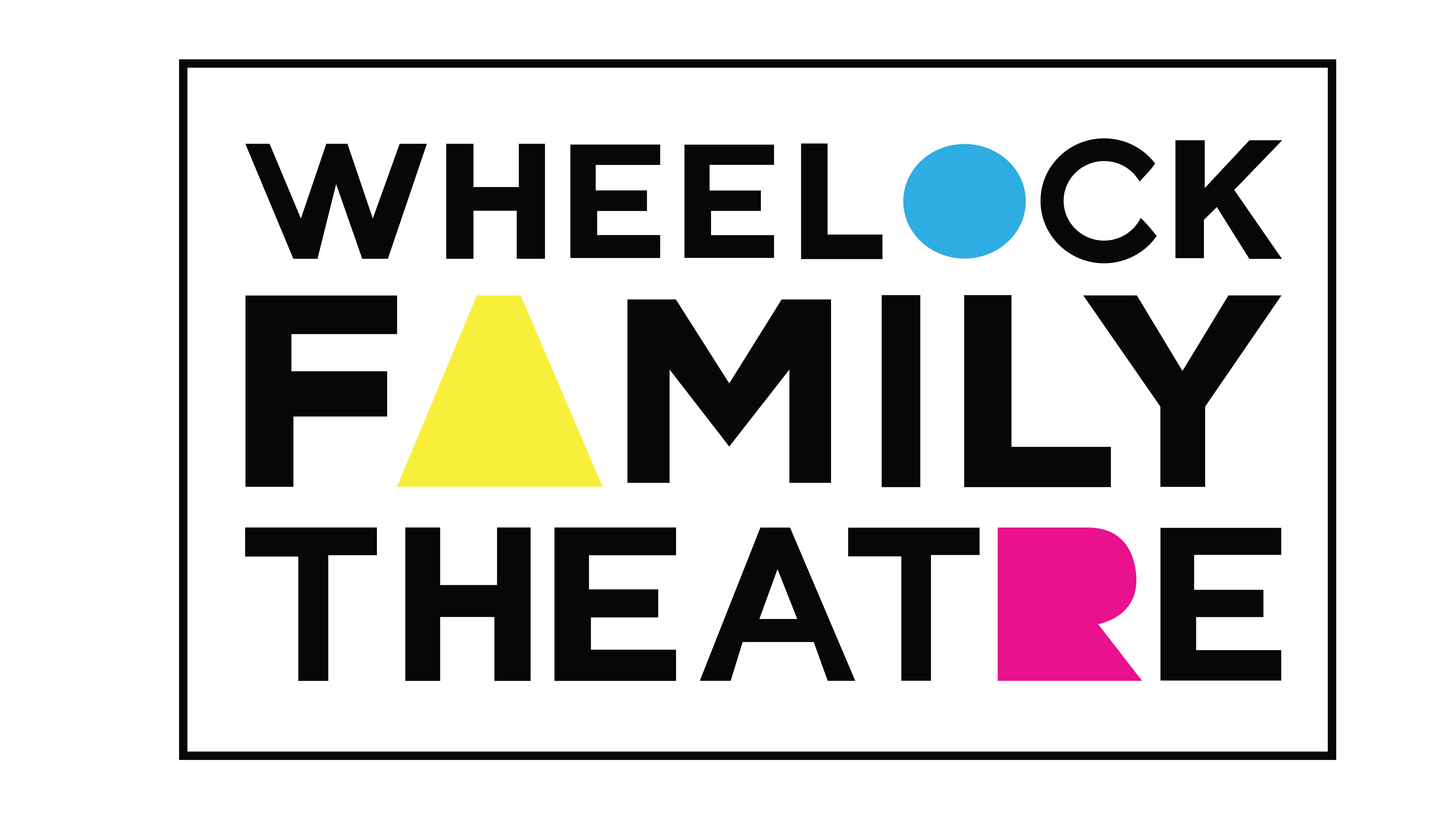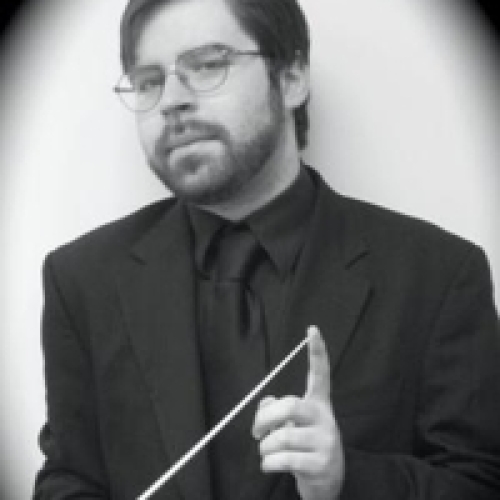
Activities are marked with the following age-range suggestions:
- EE — Early elementary (grades K-2)
- LE — Late elementary (grades 3-5)
- MS — Middle school (grades 6-8)
- HS — High school (grades 9+)
Contact Us
If you have any questions or would like to share how you and your class engaged with the VLG, send us an email at WFTEd@bu.edu.

Watch an interview with Dan Rodriguez
Watch a clip of a musical number from the workshop production
This simple variation of musical chairs encourages young students to interpret moods and emotions in music!
Students play musical chairs with the traditional rules. The added rule is that students move in whatever way the specific song/musical piece playing makes them feel, expressing the mood of the music in their bodies. Vary the types of songs you play to encourage a variety of types of movement.
After each round, while students are in chairs, ask students to describe the mood or emotion of the most recent song. What did that song make you feel? How did it make you want to move? Did you picture any characters, images, or stories when you heard that song?
Consider including songs from Make Way For Ducklings!
Variations on Musical Chairs:
- Social Distancing Musical Chairs: Instead of placing chairs in a circle, place chairs spread six feet or more apart randomly throughout the room. A large space such as a gymnasium will provide extra space, safety, and challenge!
- Remote Learning Musical Chairs: Students dance around their own rooms. When the music stops, students rush to their device and turn off their camera as quickly as possible. Last to turn off each round is out.
- Winner-less Musical Chairs: Instead of removing a chair each round, have two fewer chairs than the number of students. The first round, one student helps the teacher pick, play, and pause the music, while the remaining students play. The student who is left chair-less after the first round swaps with the musical-helper student, and so on until the teacher chooses to end the game.
This lyric analysis exercise challenges students to imagine the stories that might lead up to their favorite songs.
As an introduction to this exercise, print out and distribute lyrics to songs/portions of songs from Make Way For Ducklings.
CLICK HERE to download and print lyric excerpts from the show.
Ask students to read the songs out loud, as if they are monologues, dialogues, or scenes, depending on how many characters sing the song.
Pose the following questions to your class:
- What happens or changes when we remove the music from the song?
- In what ways do the lyrics alone function to tell the story?
- Are the lyrics as effective on their own, or do you think they need music to be complete? Why or why not?
- What can lyrics convey that music cannot? What can music convey that lyrics cannot?
- How do lyrics and music complement each other? Can you think of an example either from Make Way For Ducklings or from another song you know where the music and lyrics perfectly complement each other, or where the combination of music and lyrics creates a powerful effect?
For the remainder of this exercise, students will focus on the power of lyrics alone as tools for storytelling. Ask each individual, pair, or small group of students to select a song and print out the lyrics, or the teacher can opt to select and distribute songs. For an interesting comparison exercise, distribute the same song to all students/groups.
Students read the song out loud either as a monologue, dialogue, or scene with multiple characters, depending on their interpretation of the song. Encourage students to try this multiple ways for the sake of experimentation, distributing the lyrics differently each time!
Students consider and discuss the story that leads up to their chosen song. If this song were in a musical, what character(s) might sing this song? What would have happened in the story before the character(s) sings this song? What would happen during the song, and how would the story continue after the song?
Students convey the story they have crafted in any written or visual form they choose:
- Fit the story into a story structure, indicating where the song takes place
- Write and draw a storyboard
- Write the scene that leads up to the song and/or the scene that follows the song
- Write a book blurb for the story and/or draw the book cover to go with it
- Draw the beginning, middle, and end of the story
A reporter from each group shares their work to the rest of the class in a manner decided upon and planned by the whole group.
Ask students to comment on creative choices their peers in other groups made in their interpretations of their songs and crafting of their stories.
Transform your classroom into the silliest orchestra around!
Work together as a class to brainstorm instruments that might be found in an orchestra or marching band. If you can, be prepared with images of different instruments to pair with the instruments they suggest.
Select 3-5 instruments to use in the exercise. As a class, decide on a repetitive gesture and sound that can be made with the voice or the body to go with each instrument.
Divide the class into orchestra ‘sections,’ one section per instrument that you have selected.
Introduce your class to the hand gestures that you, as the conductor of the orchestra, will do to cue the different sections of the orchestra. Create gestures for start and stop, louder and quieter, faster and slower, higher and lower. Practice these gestures with each section of your silly orchestra.
Conduct your class using the gestures you have created!
Consider giving students the opportunity to conduct, once you have modeled how conducting works.
This exercise further develops the thought-processes begun in Form It ACTIVITY 2, asking students not only to imagine but also to use movement to perform stories that they hear in songs.
Begin this activity with some quickfire tableaux, or frozen pictures created with bodies. To do this, with students working in pairs, play 20-30 seconds of a song. Then, give the pairs one minute to discuss what story the song might be telling and work together to create a tableau of that story. Repeat for as many songs as desired to warm-up students’ creativity and physicality.
After the warm-up portion of the exercise, sit down and listen together to a song selected by the teacher, all the way through. Distribute lyrics so students can follow along.
In pairs or small groups, students are tasked with planning, rehearsing, and performing a silent scene that tells what they imagine to be the story of the selected song. The story should be told using movement only, no dialogue, and performed with the song playing in the background.
If helpful, provide students with a story structure to organize their thinking, or use the 5 Ws (who, what, where, when why) to scaffold their planning.
Ask students to get as specific as possible in crafting and performing their story. The scene should have a clear beginning, middle, and end, and communicate to the audience as much as possible about the backstory and plot.
Upon sharing scenes, reflect with any or all of the following questions:
- What moments of commitment or creativity did you see in the ways your peers used movement to tell their stories?
- What image from another group’s scene stood out to you, and why?
- Did all of the stories evoke a similar mood, or was there variation in the interpretations of the song’s mood across the stories?
- How did your group’s story evolve? Was it very clear from the outset, or did it require more discussion and collaboration to tease out?
- Do you think that every song tells a story? Why or why not?




